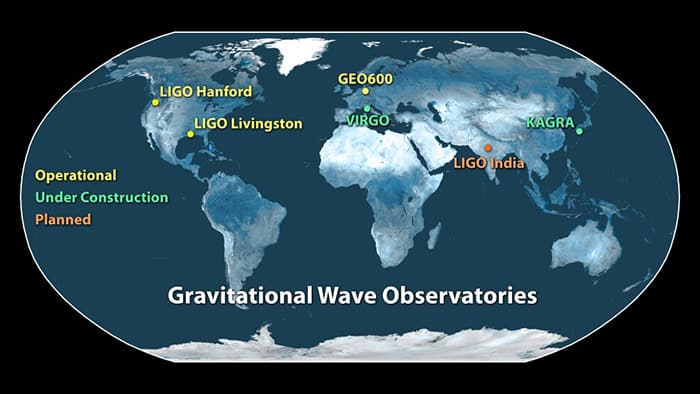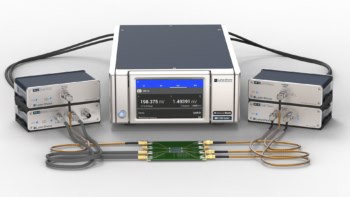Flash Physics is our daily pick of the latest need-to-know developments from the global physics community selected by Physics World‘s team of editors and reporters

Vibrating iodine stars in molecular movies
Real-time diffraction measurements of the changing structure of vibrating iodine molecules have been made by two independent groups of scientists. Phil Bucksbaum and colleagues at Stanford University and the SLAC National Accelerator Laboratory in California used X-ray diffraction to study the molecules, while Markus Gühr and colleagues at Potsdam University, the University of Nebraska and SLAC used electron diffraction. The X-ray experiment was done at SLAC’s Linac Coherent Light Source, which produces coherent X-ray pulses. The iodine molecules were first pumped with a laser pulse, putting some of the atoms in an excited vibrational state. The resultant X-ray diffraction pattern is of the molecule in its ground and excited state – and these two can be separated using mathematical manipulation. Gühr and colleagues did a similar experiment, but using electron pulses from a source also located at SLAC. In both cases, the researchers were able to track the vibrational motions of the atoms on time scales of tens of femtoseconds – essentially creating “molecular movies” of the motions. While measurements on similar timescales can be achieved using very short laser pulses, these studies relied on assumptions about the structure of the molecule – whereas the diffraction studies make no such assumptions. Both studies are described in Physical Review Letters.
Ukraine joins CERN as associate member
Ukraine has become an associate member of CERN following ratification from the country’s parliament. Ukraine and CERN first signed a co-operation agreement in 1993 and now more than 100 scientists from the country work at CERN, including on experiments at the lab’s Large Hadron Collider. Ukraine signed the associate-membership agreement with CERN on 3 October 2013, but it was not completely ratified until later last month. Associate members have no voting rights on CERN Council but take responsibility for a share of the annual budget for the lab – set at a lower limit of about $1m. Associate membership will enable scientists from Ukraine to work at CERN as well as allowing Ukrainian businesses to bid for CERN contracts.
LIGO-India location chosen

The Indian arm of the Laser Interferometer Gravitational-wave Observatory – dubbed LIGO-India – will be built in the state of Maharashtra, at Dudhala village in Hingoli district. The announcement came on Tuesday this week after the State Cabinet agreed to hand over 40.68 hectares of government-owned land to the Department of Atomic Energy to build the cutting-edge observatory, according to a report in The Hindu. India’s Union Cabinet gave its “in-principle” approval for such an observatory to be built in the country in February this year, soon after the announcement of the first direct detection of gravitational waves was made by researchers working on the Advanced Laser Interferometer Gravitational-wave Observatory (aLIGO) in the US. The Indian Initiative in Gravitational-wave Observations (IndIGO) has been a member of the international LIGO collaboration since 2011. Once built, LIGO-India will join the global network of LIGO observatories, which currently includes the US, Germany, Italy and Japan.
- You can find all our daily Flash Physics posts in the website’s news section, as well as on Twitter and Facebook using #FlashPhysics. Tune in to physicsworld.com later today to read today’s extensive news story on a gender bias study in geoscience.



